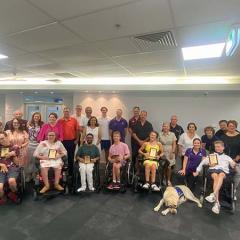Professor James Ward, Director of UQ's Poche Centre for Indigenous Health spoke with ABC News Online about the vaccination gap for Aboriginal and Torres Strait Islander peoples.
He said the vaccination gap highlights the existing inequalities for Indigenous Australians, including access to health care, housing, education and employment.
Those factors have made the vaccination rollout very challenging, but he added that he was hopeful the rollout would catch up before states and territories opened up.
Professor Ward said vaccination rates tended to be lower in states that had not suffered through major COVID-19 outbreaks, and this was particularly true for remote Indigenous communities who have so far largely avoided contact with the virus.
"Queensland and Western Australia have probably been least affected by COVID, and consequently they're the two jurisdictions with the lowest vaccination uptake," he said.
The rollout for both those states is also logistically difficult, with Indigenous communities scattered across very large land areas.
But the gap is also wide in areas currently suffering coronavirus outbreaks, like Shepparton (a gap of 26 percentage points), the Far West and Orana region of New South Wales (18 percentage points), and the Blacktown region of Sydney (24 percentage points).
"The real challenge that lies ahead is to get to all of those communities who have never been exposed to COVID-19, who don't really believe it and don't think it's a problem for them, all of these regional and remote communities … to get them vaccinated before COVID-19 does come to those communities," Professor Ward said.
"Otherwise we'll be in a situation like NSW where we're having to fly emergency workforces into areas all the time, and that's not going to be sustainable if we have multiple outbreaks all over the country."



